Do you have a question about the Marantz NR1504 /U1B and is the answer not in the manual?
Information required for ordering replacement parts via mail or fax.
Procedure for leakage current and line-to-chassis resistance checks before customer return.
Emphasizes using only designated parts marked with z for safety.
Explains search functionality in Acrobat Reader for reference numbers within the manual.
Describes how to use the search function to locate specific connectors in schematic diagrams.
Instructions on how to use the Sign function in Adobe Reader to add notes.
Explains how to use Ctrl+Space and drag mouse to magnify specific areas of diagrams.
Details on how to print specific magnified sections of the manual.
Requirements for leakage current and line-to-chassis resistance checks before returning the set.
General cautions for servicing, including electric shock, disassembly, part usage, and wire arrangement.
Highlights the importance of using designated parts, indicated by z, for safety.
Specifications for power amplifier output, input sensitivity, frequency response, and S/N ratio.
Specifications for standard and color component video connectors, including input/output levels and frequency response.
Specifications for tuner receiving range, usable sensitivity, S/N, and total harmonic distortion.
General specifications including power supply, power consumption, and standby power consumption.
Procedure for initializing the AV receiver, typically after replacing μcom or related parts.
Information on required jigs (Extension cable kit, Writing kit) for servicing and firmware updates.
References for disassembling the Front Panel Assy, including exploded view and specific PCB details.
References for disassembling PCB RC5_MX, including exploded view.
References for disassembling the Radiator Assy, including exploded view and specific PCB details.
References for disassembling the REG Assy, including exploded view and specific PCB details.
Explains the button combinations required to enter different special modes.
Explains the purpose of the µcom/DSP version display mode.
Defines the order in which version and error information is displayed.
Lists conditions that trigger errors, such as FIRM CHECK NG or DIR NG.
Displays the status codes shown on the FL display for various errors.
Shows the text displayed on the FL display for different error conditions.
Provides specific actions to take for troubleshooting errors like FIRM CHECK NG or DIR NG.
Describes the mode's behavior, allowing switching between panel lock and remote control rejection.
Details the button sequence to enter the PANEL/REMOTE LOCK Selection mode.
Explains how to select modes and how they are indicated on the FL DISPLAY.
Describes the mode's behavior, allowing switching between diagnostic and protection history modes.
Details the button sequence to enter the Service Related Selection mode.
Instructions on how to exit the diagnostic mode.
States the purpose of the diagnostic mode for confirming video and audio paths.
Details the button sequence to enter the diagnostic mode.
Instructions on how to cancel the diagnostic mode.
Explains how to navigate between video and audio items using the remote controller.
Describes the function of the error mode for displaying protection history.
Details how protection incidents (ASO, DC, THERMAL) are displayed on the FL display.
Lists the types of information displayed in the Operation Info mode.
Details how to navigate and view information like operating time, power on count, and protection counts.
Step-by-step instructions for backing up and recovering settings using the Dual Backup Memory.
Precautions for clearing the Dual Backup Memory, especially after replacing Flash ROM.
Lists the network settings that are initialized by this mode.
Step-by-step instructions for initiating the NETWORK Initialization mode.
Details the preparation steps for connecting the PCB HDMI JIG, including required parts.
Outlines the procedures for disassembling the BACK PANEL and disconnecting the connector board.
A table mapping pin numbers, reference numbers, and PCBs for board-to-board connections.
Step-by-step guide for updating firmware using the DFW utility.
Lists the necessary preparations, including PC software, cables, and writing kits.
Explains how to connect the AV receiver to a PC for firmware updating via the WRITING KIT.
Specific instructions for turning on the AV receiver while in WRITING mode.
Instructions on how to launch the DFW firmware update application on the PC.
Steps to verify communication between the PC and the AV receiver before firmware download.
Instructions on how to load the firmware file into the DFW application.
Lists system requirements for connecting to the network for firmware updates.
Steps for checking firmware availability and initiating the update process.
System requirements and guidelines for connecting a USB memory device.
Instructions on unzipping the downloaded file and copying the firmware folder to the USB drive.
Preparation steps for adjustment, including environmental conditions and presetting the unit.
Step-by-step instructions for adjusting idling current using a DC voltmeter and variable resistors.
Table detailing available sound modes and adjustable surround parameters.
Flowchart to diagnose and resolve power-on issues, checking indicators, fuses, and voltage supplies.
Describes checks for short circuits and defective parts related to blown fuses.
Flowchart to diagnose HDMI/DVI no picture or sound issues, checking cables, selectors, and player settings.
Flowchart for diagnosing audio output problems across different input types (Analog, COAX/OPT, HDMI).
Flowchart to diagnose network connection problems, checking environment, settings, and internal circuits.
Lists IC components, providing pin functions and descriptions for ADV7623.
Information required for ordering replacement parts via mail or fax.
Procedure for leakage current and line-to-chassis resistance checks before customer return.
Emphasizes using only designated parts marked with z for safety.
Explains search functionality in Acrobat Reader for reference numbers within the manual.
Describes how to use the search function to locate specific connectors in schematic diagrams.
Instructions on how to use the Sign function in Adobe Reader to add notes.
Explains how to use Ctrl+Space and drag mouse to magnify specific areas of diagrams.
Details on how to print specific magnified sections of the manual.
Requirements for leakage current and line-to-chassis resistance checks before returning the set.
General cautions for servicing, including electric shock, disassembly, part usage, and wire arrangement.
Highlights the importance of using designated parts, indicated by z, for safety.
Specifications for power amplifier output, input sensitivity, frequency response, and S/N ratio.
Specifications for standard and color component video connectors, including input/output levels and frequency response.
Specifications for tuner receiving range, usable sensitivity, S/N, and total harmonic distortion.
General specifications including power supply, power consumption, and standby power consumption.
Procedure for initializing the AV receiver, typically after replacing μcom or related parts.
Information on required jigs (Extension cable kit, Writing kit) for servicing and firmware updates.
References for disassembling the Front Panel Assy, including exploded view and specific PCB details.
References for disassembling PCB RC5_MX, including exploded view.
References for disassembling the Radiator Assy, including exploded view and specific PCB details.
References for disassembling the REG Assy, including exploded view and specific PCB details.
Explains the button combinations required to enter different special modes.
Explains the purpose of the µcom/DSP version display mode.
Defines the order in which version and error information is displayed.
Lists conditions that trigger errors, such as FIRM CHECK NG or DIR NG.
Displays the status codes shown on the FL display for various errors.
Shows the text displayed on the FL display for different error conditions.
Provides specific actions to take for troubleshooting errors like FIRM CHECK NG or DIR NG.
Describes the mode's behavior, allowing switching between panel lock and remote control rejection.
Details the button sequence to enter the PANEL/REMOTE LOCK Selection mode.
Explains how to select modes and how they are indicated on the FL DISPLAY.
Describes the mode's behavior, allowing switching between diagnostic and protection history modes.
Details the button sequence to enter the Service Related Selection mode.
Instructions on how to exit the diagnostic mode.
States the purpose of the diagnostic mode for confirming video and audio paths.
Details the button sequence to enter the diagnostic mode.
Instructions on how to cancel the diagnostic mode.
Explains how to navigate between video and audio items using the remote controller.
Describes the function of the error mode for displaying protection history.
Details how protection incidents (ASO, DC, THERMAL) are displayed on the FL display.
Lists the types of information displayed in the Operation Info mode.
Details how to navigate and view information like operating time, power on count, and protection counts.
Step-by-step instructions for backing up and recovering settings using the Dual Backup Memory.
Precautions for clearing the Dual Backup Memory, especially after replacing Flash ROM.
Lists the network settings that are initialized by this mode.
Step-by-step instructions for initiating the NETWORK Initialization mode.
Details the preparation steps for connecting the PCB HDMI JIG, including required parts.
Outlines the procedures for disassembling the BACK PANEL and disconnecting the connector board.
A table mapping pin numbers, reference numbers, and PCBs for board-to-board connections.
Step-by-step guide for updating firmware using the DFW utility.
Lists the necessary preparations, including PC software, cables, and writing kits.
Explains how to connect the AV receiver to a PC for firmware updating via the WRITING KIT.
Specific instructions for turning on the AV receiver while in WRITING mode.
Instructions on how to launch the DFW firmware update application on the PC.
Steps to verify communication between the PC and the AV receiver before firmware download.
Instructions on how to load the firmware file into the DFW application.
Lists system requirements for connecting to the network for firmware updates.
Steps for checking firmware availability and initiating the update process.
System requirements and guidelines for connecting a USB memory device.
Instructions on unzipping the downloaded file and copying the firmware folder to the USB drive.
Preparation steps for adjustment, including environmental conditions and presetting the unit.
Step-by-step instructions for adjusting idling current using a DC voltmeter and variable resistors.
Table detailing available sound modes and adjustable surround parameters.
Flowchart to diagnose and resolve power-on issues, checking indicators, fuses, and voltage supplies.
Describes checks for short circuits and defective parts related to blown fuses.
Flowchart to diagnose HDMI/DVI no picture or sound issues, checking cables, selectors, and player settings.
Flowchart for diagnosing audio output problems across different input types (Analog, COAX/OPT, HDMI).
Flowchart to diagnose network connection problems, checking environment, settings, and internal circuits.
Lists IC components, providing pin functions and descriptions for ADV7623.
| Channels | 5.1 |
|---|---|
| Power Output | 50W per channel (8 ohms, 20Hz-20kHz, 0.08% THD) |
| HDMI Inputs | 6 |
| HDMI Outputs | 1 |
| Audio Return Channel (ARC) | Yes |
| Network Connectivity | Ethernet |
| AirPlay | Yes |
| DLNA Certified | Yes |
| 3D Pass-Through | Yes |
| 4K Pass-Through | Yes |
| Decoding | Dolby TrueHD, DTS-HD Master Audio |
| Frequency Response | 10 Hz - 100 kHz (+1, -3 dB) |
| Total Harmonic Distortion | 0.08% |
| Input Sensitivity | 200 mV |
| Signal-to-Noise Ratio | 98 dB |
| Tuner Type | AM/FM |
| Digital Inputs | 2 Optical, 1 Coaxial |
| Analog Inputs | 4 |
| Bluetooth | No |
| Wi-Fi | No |
| Outputs | 1 Subwoofer |

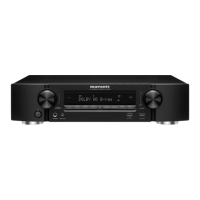
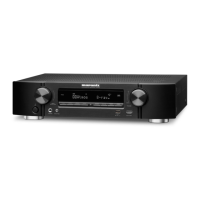
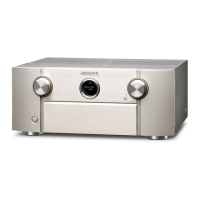
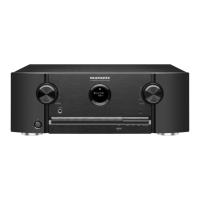
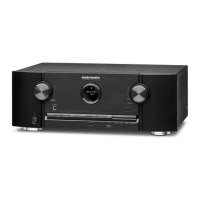

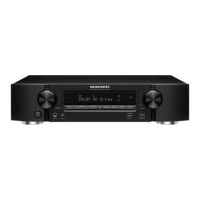
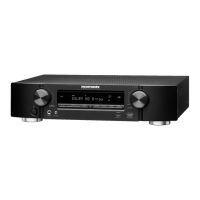
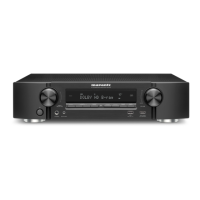
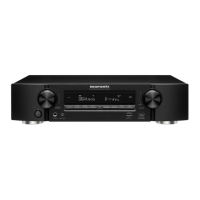
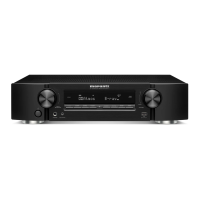
